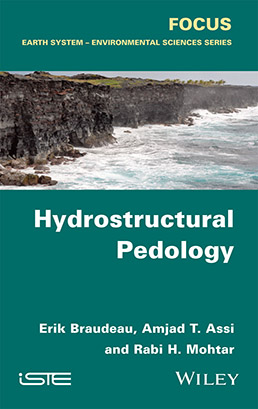
This book presents an in-depth guide to the subject matter and main points of hydrostructural pedology, as theorized for the first time. The authors focus on the underlying concepts, the purpose and role this field plays within agroenvironmental sciences. It is divided into two parts.
Part 1 presents the theory behind hydrostructural pedology. The systemic approach applied to the soil is presented, showing how this leads to the thermodynamic formulation of water in the soil’s organized medium and to the systemic modeling of soil–water-coupling in natural or anthropic organizations.
Part 2 presents the methodology to complement the first part. In it, the authors determine the hydrostructural characteristics of the pedostructure, characteristic parameters of equilibrium state equations and the hydrostructural functioning of the soil.
Part 1. Theory of Systemic Modeling of the Pedostructure within the Hierarchal Hydrofunctional Organization of the Natural Environment.
1. Introduction to Part 1.
2. Inherent Problems of Soil Science.
3. The Systemic Approach Applied to Pedology.
4. The General System (GS): General Model of Scientific Disciplines Related to the Study and Management of Natural Areas.
5. Emergence of a New Scientific Discipline: Hydrostructural Pedology.
6. Implications for Agro-environmental Sciences.
Part 2. Hydrostructural Characterization of Soil Pedostructure.
7. Introduction to Part 2.
8. Theoretical Recall.
9. Methods for Determining the Characteristic Parameters.
Erik Braudeau is a Senior Scientist in Pedology and Soil Water Physics, retired from the Institute of Research for Development (IRD, France) and Adjunct Professor at the Texas A&M University in Texas, USA.
Amjad T. Assi is Assistant Research Scientist in the Department of Biological and Agricultural Engineering at the Texas A&M University in Texas, USA.
Rabi H. Mohtar is TEES Endowed Professor in the Department of Biological and Agricultural Engineering at the Texas A&M University in Texas, USA.